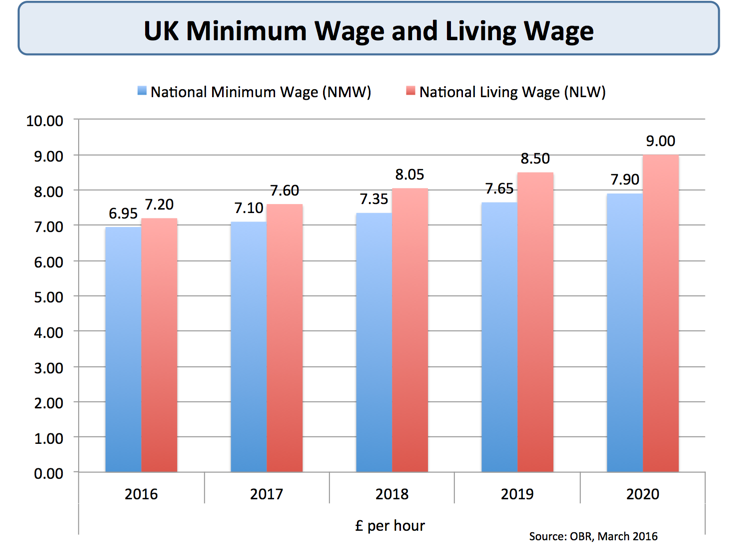Free Trade and the Crisis of the Exporters Dec 21, 2015
Last week, the South Korean president called for the development of an economic contingency plan to brace for a possible crisis. There was much internal politics behind the announcement, but at the root, the South Koreans are worried. Their fundamental problem is that they are enormously efficient exporters—with exports totaling just over half of their GDP. A short while ago, this export efficiency would have been regarded as a testimony to their power. Now, it is a sign of danger. We have moved away from a world in which efficient exporters were to be envied. That is simply no longer the case. Exporters of industrial goods, commodities, and services are hostages to their customers. Their economic problems quickly become the exporters’ problems and can rapidly move from economic issues, to political and social instability. That is South Korea’s fear, but it is a fear that is now one of the drivers of the international system.
It has been a core assumption of economists that free trade is a primary path to economic well-being. The primary criticism of free trade has come from the viewpoint of countries that were inefficient exporters, whose comparative advantage was so minimal that it would rapidly be swamped internally by efficient exporters. The United States, Britain, Germany, Japan, and China all developed by protecting their markets from competitors. They saw free trade as threatening vulnerable industries. They loved having unfettered access to foreign markets. But they worried about providing unfettered access to their own markets.
We must always bear in mind that the classical economists did not speak of economics. They spoke of political economy, and the loss of the word “political” in the late 19th century is not one that Adam Smith, who wrote of the Wealth of Nations, would have approved of. The classical economists understood the true challenge of free trade: it is not that, in the long run, free trade doesn’t aid all nations, but rather, the long run could be very long in coming.
The comparative advantage between two trading partners could overwhelmingly favor one of the countries. The economic and political clocks run differently. Economic advantage can take many decades to show itself. The critical working lifespan of an individual is perhaps two decades. What he becomes between the ages of 20 and 40 determines who he is, and the loss of those years to the slow turning of the economic wheel inevitably creates political friction. This was well known to the classical economists and not always apparent to contemporary free trade advocates.
This lack of synchronicity between economic and political processes is a problem of the theory and one that has to be borne in mind. But, in 2008, a new phenomenon emerged that is now a major and seemingly accelerating force, joining the other more common consequences of free trade. This time, it is the beneficiaries of the comparative advantage who are at risk of political and social instability. To be more specific, both sides of the equation are now incurring some risk.
The vulnerability was always there, but it showed itself during the financial crisis of 2008—the kind of crisis that is a new stage and an inevitable part of the international economic system, meaning that this was an accident waiting to happen. The crisis hit the United States and Europe, causing a contraction of demand among the most intense consumers in the world. The decline in their consumption struck directly at China, this generation’s low-wage, high-growth economy. China’s economic growth depended heavily on exports and, as the growth rate declined, the government tried various schemes for increasing both exports and domestic consumption, avoiding social unrest through a policy of maintaining employment and political repression.
In international trade, interestingly, an understanding of what is happening can lag by several years behind what has already happened. There were articles on the Japanese economic miracle in the mid-1990s. Eventually, it became clear that China was not in a temporary downturn but a secular shift, and the prices of industrial minerals—built around irrational expectations of China’s economy—collapsed.
The lack of appetite for Chinese goods became an exporting crisis for China. That, in turn, created an exporting crisis for those who had been supplying China’s economic growth, including oil and other mineral exporters and, as we began, South Korea, where half of exports are destined for China. It is interesting to note how unsynchronized economic reality and economic perception are in the area of international trade. There is always a psychological resistance to accepting that a country like China has shifted its economic performance. China assumed that the United States and Europe would both recover and resume importing Chinese goods. Australia, the Persian Gulf, and South Korea assumed that China would resume prior levels of production. And now, the world is assuming that the tertiary effects—the collapse of oil prices and crises in secondary exporters like South Korea—can be managed. The geopolitical system, of which international economics is a subset, grinds slowly, but it grinds fine.
However, the grinding has not yet touched one of the major export addicts in the world—Germany. Germany is the world’s fourth largest economy, and it exports just under 50 percent of its GDP. That makes Germany by far the most dependent on exports of any of the world’s top ten economies. Germany has been a massive exporter since the late 19th century—with obvious pauses. As a fairly late entry into the industrial revolution, it has built its economy through high domestic savings rates and exports. After World War II, it recreated this model. That means that it accelerates this process by maintaining high domestic savings and relatively low consumption, building its industrial base, in particular, and becoming highly dependent on exports. Maintaining a strong position in Europe especially—where a high percent of its goods are purchased—is Germany’s leading national security problem, and one it has approached in various ways.
The current approach is the maintenance of the European free trade zone at any cost. Whatever the internal crisis, and whatever the German ferocity, expelling any member state from any European institution is a high-risk manoeuvre Germany can’t bear. Any devolution might lead to withdrawal from the free trade zone. Many European countries suffer from the first sort of economic imbalance, in which their political equilibrium is triggered by immature comparative advantages. The one response Germany can’t permit is massive modification of European free trade rules… rules that are likely unsustainable.
Therefore, Germany is both the most effective economy in Europe, and also the most insecure. Should there be a massive contraction of demand for its products, either due to economic or political causes, Germany has a massive vulnerability. Its prosperity and full employment depends on its export system, and it exports a full range of products— from high-tech goods to bolts. Its entire system depends on exports, and this exposes the country to export failure. The Germans are painfully aware of this risk, which is why they always back off from their threats on EU matters. But it should be noted that this level of export dependence in the fourth largest economy in the world is likely unsustainable in the current environment, which we expect will last for quite a while. Moreover, an increase in percentage of exports relative to GDP is hard to imagine. There is little upside in Germany given the global environment, and a great deal of downside. How it manages this—if what we think is likely to happen, actually happens—is one of the major geopolitical questions today.
Any exporting country is at this point an insecure country. The world appears to have entered a period of no, low, or modest growth, and the appetite for exports has become less than robust. Certainly, the possibility of growing economies through exports has become problematic. The effort to generate domestic demand is not easy, partly because that demand would inevitably cut into the country’s capital base by decreasing the rate of savings at the very least, or even decreasing the base in absolute terms through government stimulus. This is not an economic problem in itself by any means. It is a social, political, and cultural shift of the first order.
It is interesting to look at Japan, which used to be a major exporter and where exports are now about 16 percent of GDP. Attempts at stimulating domestic consumption have faced not only economic hurdles, but cultural ones. We do not believe Japan is heading for catastrophe, I should add. It is instead a model for a new normal—high debt held by the Japanese with high net worth on an international basis, where Japan accepts low growth in return for social stability. Look at Japan as a precursor state rather than as the nearly failed state observers have been calling it for almost a generation. At some point, the failure of expectations should lead to a shift in forecast.
From the broadest view, what we are seeing is enormous pressure on exporters of all sorts. This pressure on them is leading many to seek new markets, which is putting extreme pressure on many high import countries. Interestingly, even if these are also high export countries, the pressure on their base is in some cases already eroding their ability to sustain their export rate because of the extremely competitive environment. As a result of this process, the threat of social instability in the major exporters of both commodities and other goods is mounting. The South Koreans are openly stating this, but it is the social and political consequences of export decline in major economies that are the most serious. Consider China and Russia as examples of a major industrial exporter and a major mineral and commodity exporter. There is then the secondary effect on smaller countries that are already major importers having more products at lower prices offered to them. Her e too, the economic advantage is washed away by the social consequences.
It is interesting to look at the United States in all this, the producer of nearly a quarter of the world’s GDP. Its export rate is only 13.5 percent of GDP, of which about 40 percent goes to Canada and Mexico, its NAFTA partners. What differentiates the United States is both relatively high (if currently restrained) domestic consumption and relatively limited exposure to foreign dysfunctions. What is remarkable about the global system is that the United States, which should have a very high dependence on exports given its size, has a very limited one. We are seeing an intensified decoupling of the United States from exposure to the international system. It is this decoupling which is encouraging European, Chinese, and other capital flight. There is safety in not being exposed.
It comes down to this. Efficient exporters have one vulnerability—their customers. Since 2008, we have seen a systematic shift in patterns of consumption. Exporters have been hit hard, and consumers have seen minimal benefits because their own dysfunction has eroded the value of bargain sales. Emerging exporters have seen their markets contract. There is no obvious path out of this, but two patterns have developed.
One we have spoken of. As much as Eurasia—Europe and Asia—is in chaos, the United States is doing fairly well and is well insulated. The second pattern involves a set of entry-level countries, primarily in East Africa and some in the neglected parts of Asia, which are developing baseline production in products like garments and cell phone assembly that are in perpetual demand and are replicating the Chinese model. Please recall that no sane person would have invested in China in the 1970s, but that is what genuinely emerging markets look like. Thus, there are two engines. One is the United States, and the other is these emerging economies. International capitalism always has these periods of malaise, and they are always different. Think of the 1970s. These periods are solved by new patterns of production and trade. The patterns emerge from the top and the bottom: from the top of the food chain and the bottom. But also remember that the transformation can be painful… and not only economically.
We are clearly deep into the transition. The economic act has not run its course, but shown its hand by reversing the relationship between exporters and importers. We are now entering the period of social instability and conflict. Economics, politics, and war are simply different aspects of the same thing.
George Friedman
Editor, This Week in Geopolitics
|













We are in danger of becoming addicted to low interest rates